The ADATA XPG Cybercore 1300W PSU Review: Advanced From the Start
by E. Fylladitakis on March 10, 2022 8:00 AM EST- Posted in
- Cases/Cooling/PSUs
- PSUs
- ADATA
- 80Plus Platinum
- XPG
- CWT
Hot Test Results (~45°C Ambient)
The XPG Cybercore is built from components that are capable of tolerating very high temperatures, which gave the PSU an edge while we were testing it inside our hotbox. The efficiency drop was very small, with a marginal average efficiency reduction of 0.4% across the nominal load range. In theory, the XPG Cybercore could receive its 80Plus Platinum certification even if the testing were to take place inside a hotbox. There is no disproportionate efficiency drop when the PSU is heavily loaded either, indicating that it is exceptionally resilient to thermal stressing.
No matter how efficient the XPG Cybercore is, that kind of power output will still produce a significant amount of thermal losses that the PSU will have to deal with. The temperature of the internal components will always be high if the PSU has to work under such adverse conditions, and higher than 60°C on the major active components across any load. Due to the cooling profile, the temperature of the internal components will be high while the unit is lightly loaded, will then drop when the load is moderate, and then keep rising until the unit reaches its maximum capacity. The temperature will reach a worrying level only when the XPG Cybercore is forced to operate at maximum load for prolonged periods of time.
The strange thermal behavior of the XPG Cybercore is due to the cooling fan or, to be more specific, the programmed cooling profile behind it. Regardless whether the unit was operating inside our hotbox or not, the thermal control circuit did not start the fan when the load was low. This was the culprit behind the high temperatures while the unit was only lightly loaded, which then dropped as the fan came on. The speed of the fan did not follow the same profile as when the unit was outside our hotbox though, as it reached its maximum speed with a load of 800 Watts and, naturally, maintained that high speed to the end of the load range.


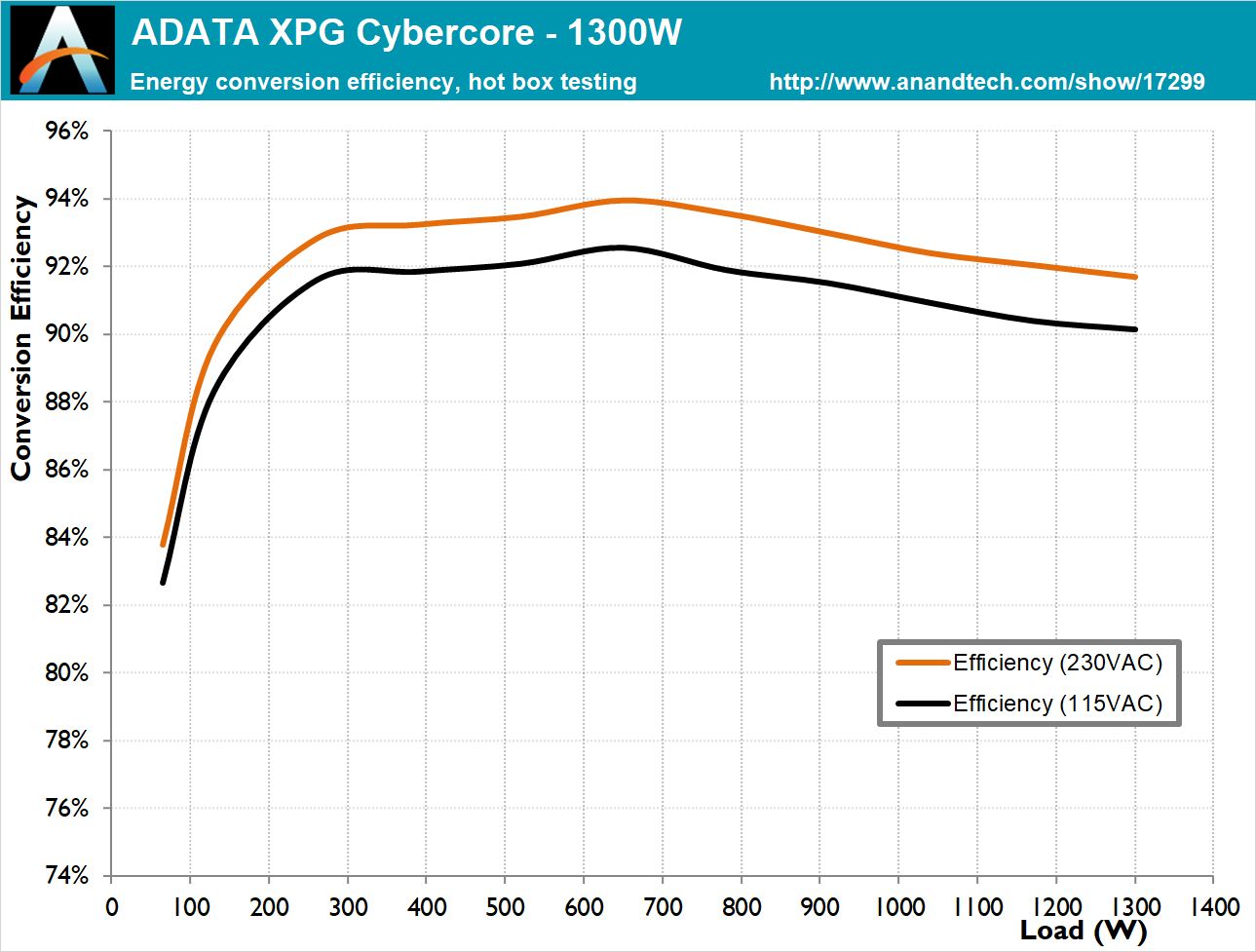
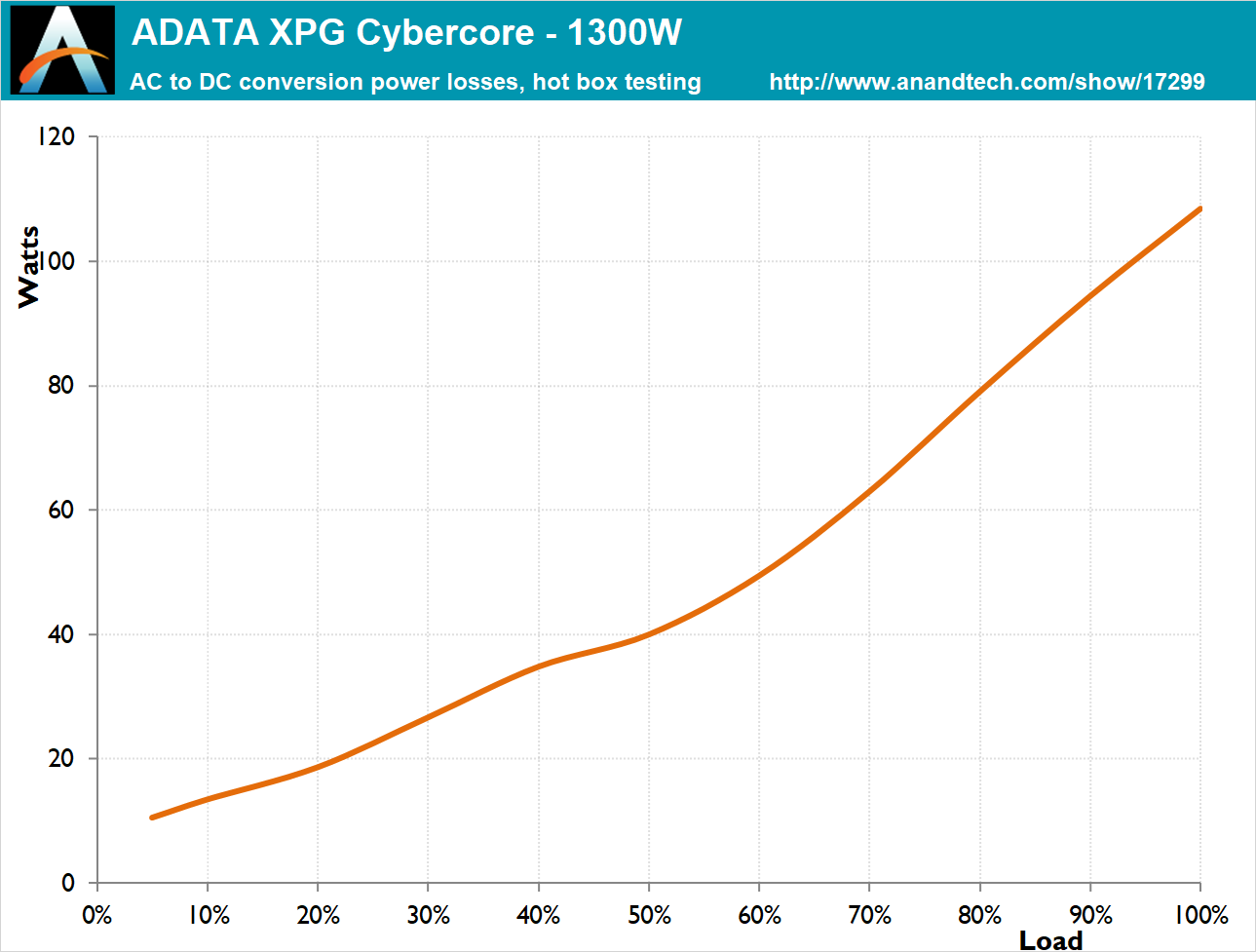
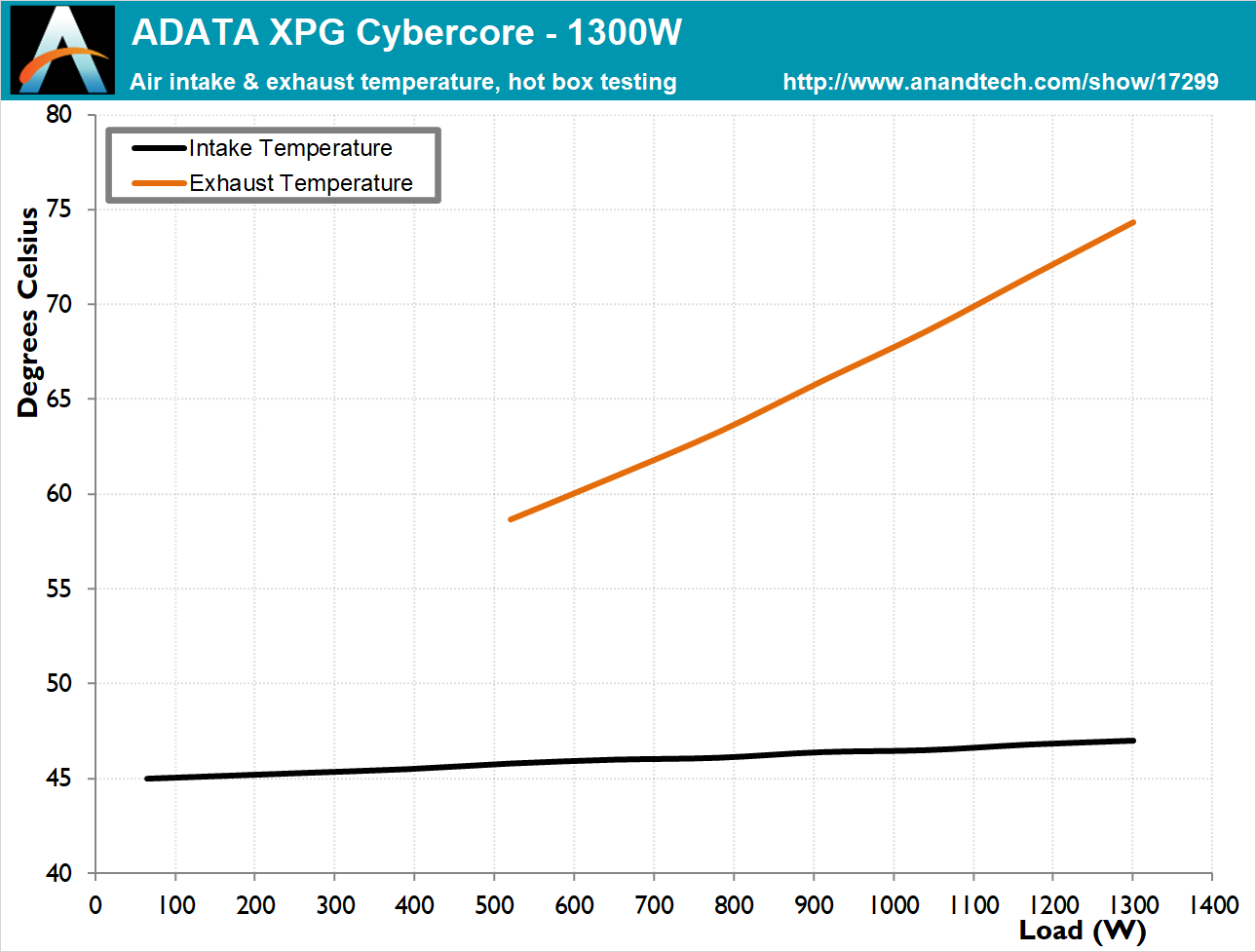
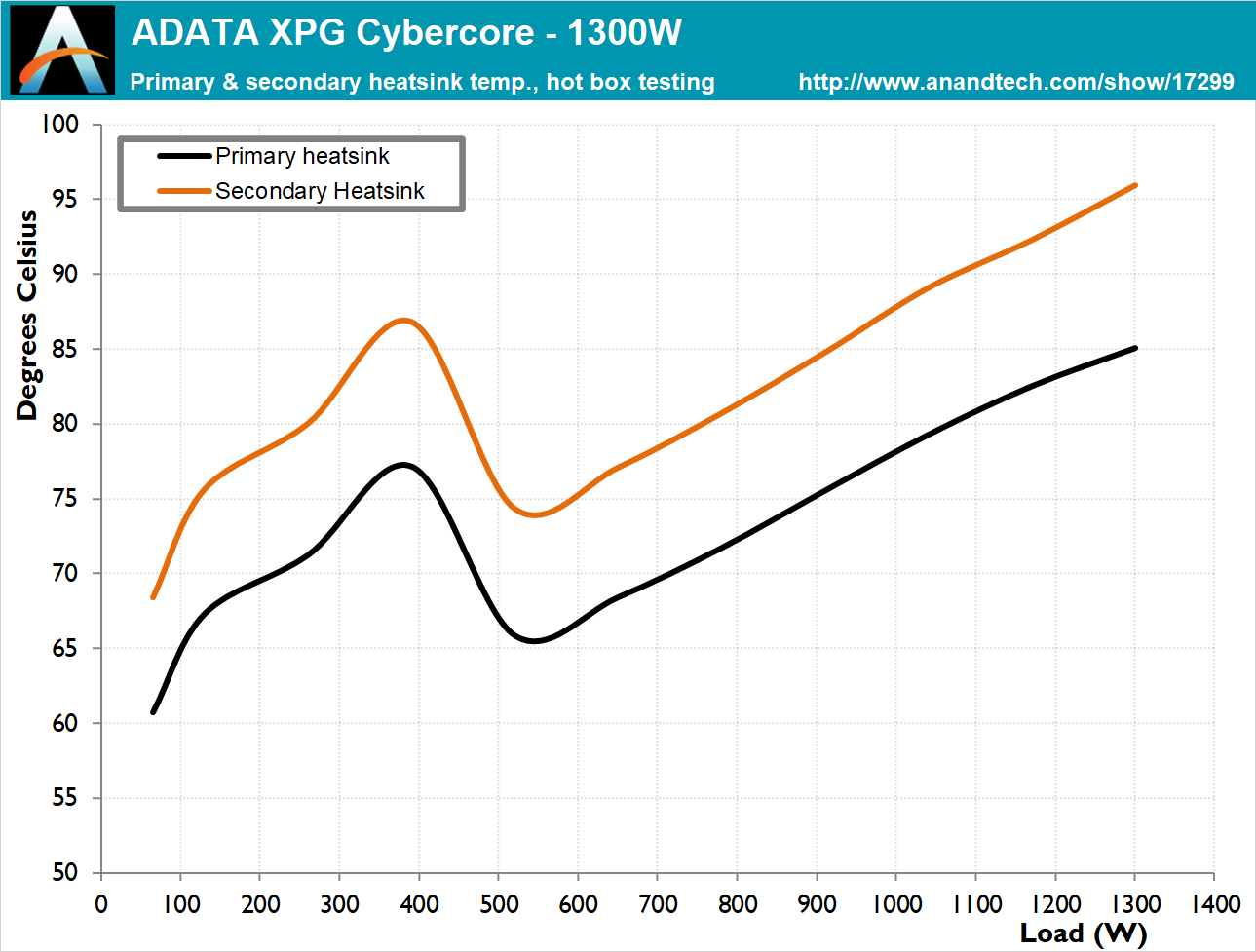
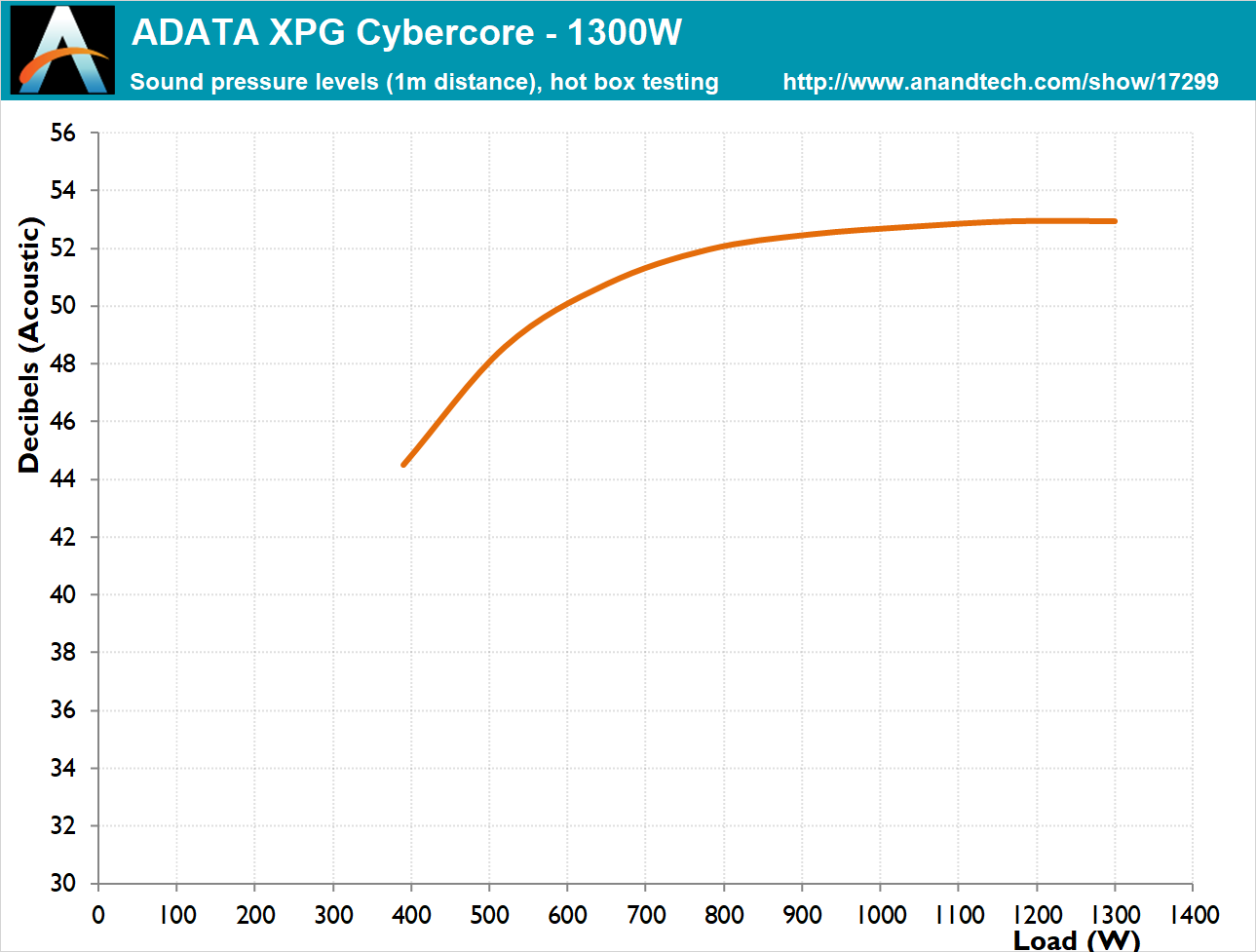








35 Comments
View All Comments
shabby - Thursday, March 10, 2022 - link
When will we start seeing the 16pin connectors gpu connectors?DougMcC - Thursday, March 10, 2022 - link
Yeah I can't imagine buying a PSU over 1000W without it.Einy0 - Friday, March 11, 2022 - link
I can't imagine buying a 1000W power supply at all. My current 850W is overkill even with a Vega 64 in my system. Most people will never even use the 650 Watts required to hit peak efficiency on this 1300W beast. What we need are power supplies that can provide 90+ efficiency at the 50 to 60W idle most of our PC run at these days. Power supplies like this are for what, crypto mining? Servers typically use a completely different form factor, SLI is dead, so yeah mining...Threska - Friday, March 11, 2022 - link
Maybe someone running a thread-ripper build might especially with a modern GPU.Einy0 - Friday, March 11, 2022 - link
Yes, if you have a Threadripper that pulls 400 Watts peak and a 3090 that does 500 Watts peak, you need a 1000 Watt power supply.Eliadbu - Saturday, March 12, 2022 - link
well, you will need more than 1000W don't forget other components and overhead.but future cards will reach 500-600W and even more. getting higher wattage PSU is good idea but I would wait for PSUs that are fully compliant to ATX V3.0 .
ingwe - Sunday, March 13, 2022 - link
You are right. But I can't fathom building a computer that draws that much power. It just feels crazy to me and I don't even live in a very warm climate. It really is just that the energy we are talking about feels crazy. Most plugs in the US are 15 Amps max, so we are getting to the limits there.Byte - Sunday, March 13, 2022 - link
Yep, i built a threadripper 32core system with 2x 2080Ti, it will go over 1000W and shut the system off.at_clucks - Wednesday, March 16, 2022 - link
"future cards will reach 500-600W and even more"With energy prices exploding I can't wait for the already overpriced GPUs to ramp up 600W. They'll sell like *very* hot cakes. Perhaps they decide to switch to smaller nodes, or [gasp!] actually consider efficiency!
meacupla - Friday, March 11, 2022 - link
Just wait until you see the power requirements for the RTX 4090. Rumoured to be 450W to 600W on its own.RTX 3090 requires 480W, but when you factor in its transient loads, this requirement can go above 500W. It is generally recommended to run a minimum 1000W PSU with an RTX 3090, if you don't want to crash during a transient spike.